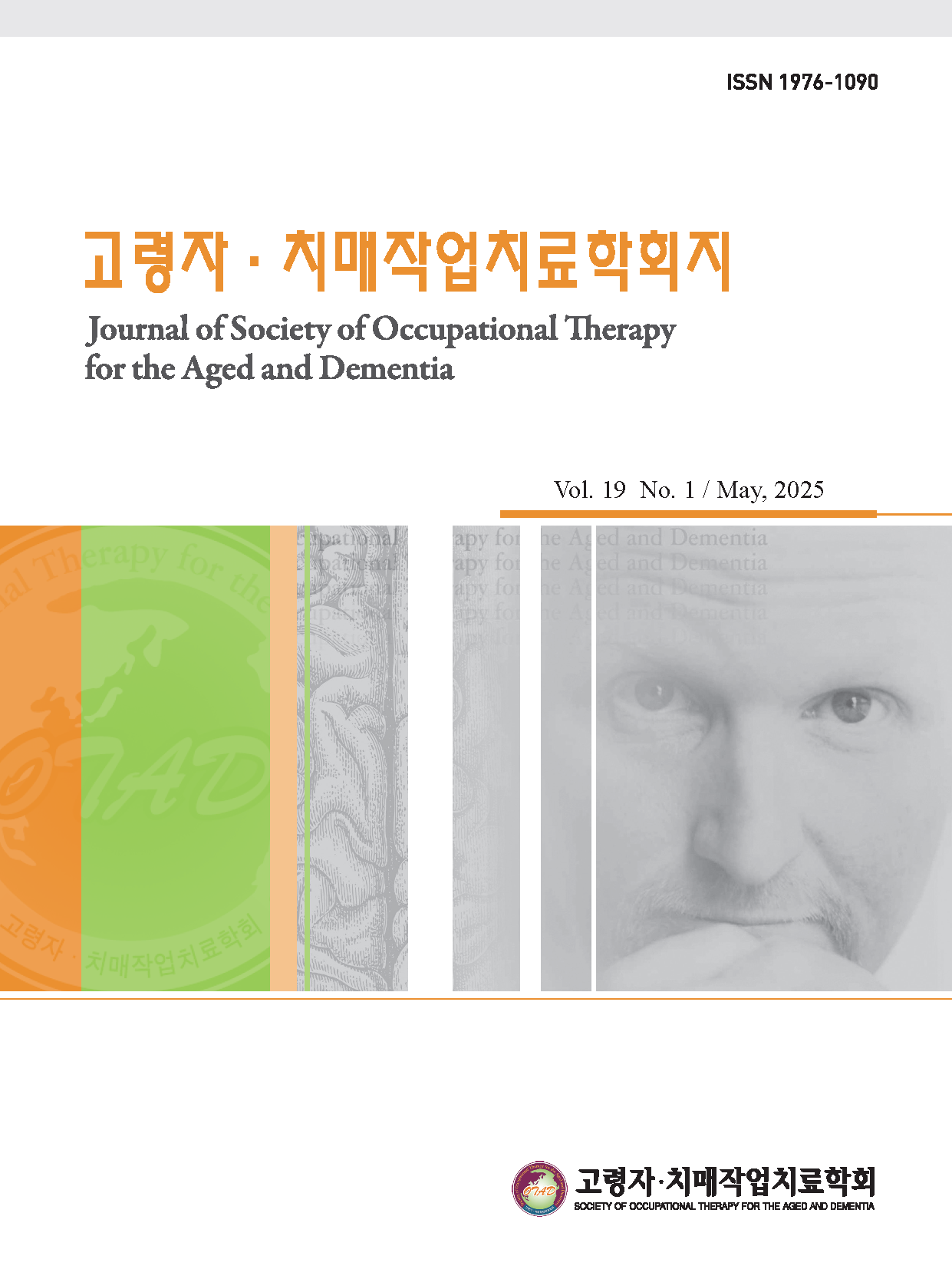노인의 인지기능과 우울 간 관계에서 기본적(BADL), 수단적(IADL) 일상생활활동의 조절효과
Moderating Effects of BADL and IADL on the Relationship between Cognitive Function and Depression in Older Adults
- 고령자・치매작업치료학회
- 고령자・치매작업치료학회지
- 제19권 제1호
-
2025.0587 - 99 (13 pages)
-
DOI : 10.34263/jsotad.2025.19.1.87
- 9

목적: 본 연구는 노인의 인지기능과 우울의 관계에서 기본적 일상생활활동(BADL)과 수단적 일상생활활동(IADL)의 조절효과를 분석하는 것을 목적으로 하였다. 특히, 초고령 사회에서 노인의 정신건강관리를 위한 차별화된 개입 전략의 필요성을 확인하고자 하였다. 연구방법: 보건복지부의 2023년 노인실태조사 원시자료를 활용하여 진행되었다. 만 65세 이상 노인 총 10,078 명의 자료를 분석하였으며, 인지기능(MMSE-K), 우울(SGDS-K), 기본적 일상생활활동(K-ADL), 수단적 일상생활활동(K-IADL)의 변수를 포함하였다. 인지기능과 우울 간의 관계에서 BADL과 IADL 의 조절효과를 분석하기 위해 Process Macro (Model 1)를 사용하였다. 연구결과: 인지기능은 우울 수준을 유의하게 낮추는 것으로 나타났으며, BADL과 IADL 모두 우울 수준을 유의하게 조절하였다. 존슨-네이만 분석 결과, BADL 점수가 11.177 미만인 경우와 IADL 점수가 17.521 미만인 경우에는 인지기능이 높을수록 우울 수준이 낮았다. 반면, BADL 점수가 14.919를 초과하거나 IADL 점수가 21.896을 초과하는 경우에는 인지기능이 높을수록 오히려 우울 수준이 높아지는역설적 결과가 나타났다. 결론: 인지기능과 우울의 관계는 노인의 일상생활활동 수준에 따라 달라질 수 있음이 확인되었다. 이 결과는 노인 우울 예방 및 관리에 있어 개인의 기능 수준을 고려한 맞춤형 접근이 필요함을 시사한다. 특히 기능 의존성이 높은 노인의 경우, 인지 훈련과 더불어 정신건강 지원과 대처 전략 교육 등 복합적인 중재가 효과적일 수 있다.
Objective : The purpose of this study was to analyze the moderating effects of Basic Activities of Daily Living (BADL) and Instrumental Activities of Daily Living (IADL) on the relationship between cognitive function and depression in older adults. Specifically, this study aimed to identify the need for differentiated intervention strategies for mental health management of older adults in a super-aged society. Methods : This study utilized raw data from the 2023 Survey of Living Conditions and Welfare Needs of Korean Older Persons conducted by the Ministry of Health and Welfare. A total of 10,078 participants aged 65 and older were analyzed, with variables including cognitive function (MMSE-K), depression (SGDS-K), Activities of Daily Living (K-ADL), and Instrumental Activities of Daily Living (K-IADL). Process Macro (Model 1) was used to analyze the moderating effects of BADL and IADL on the relationship between cognitive function and depression. Results : Cognitive function was found to significantly reduce depression levels, with both BADL and IADL significantly moderating this relationship. Johnson-Neyman analysis revealed that when BADL scores were below 11.177 and IADL scores were below 17.521, higher cognitive function was associated with lower depression levels. Conversely, when BADL scores exceeded 14.919 or IADL scores exceeded 21.896, a paradoxical relationship emerged where higher cognitive function was associated with increased depression levels. Conclusion : The results confirmed that the relationship between cognitive function and depression can vary depending on the level of daily living activities in older adults. These findings suggest that a personalized approach considering individual functional levels is necessary for the prevention and management of depression in older adults. Particularly for older adults with high functional dependency, complex interventions that combine cognitive training with mental health support and coping strategy education may be effective.
Ⅰ. 서 론
Ⅱ. 연구방법
Ⅲ. 연구결과
Ⅳ. 고 찰
Ⅴ. 결 론
참고문헌
(0)
(0)